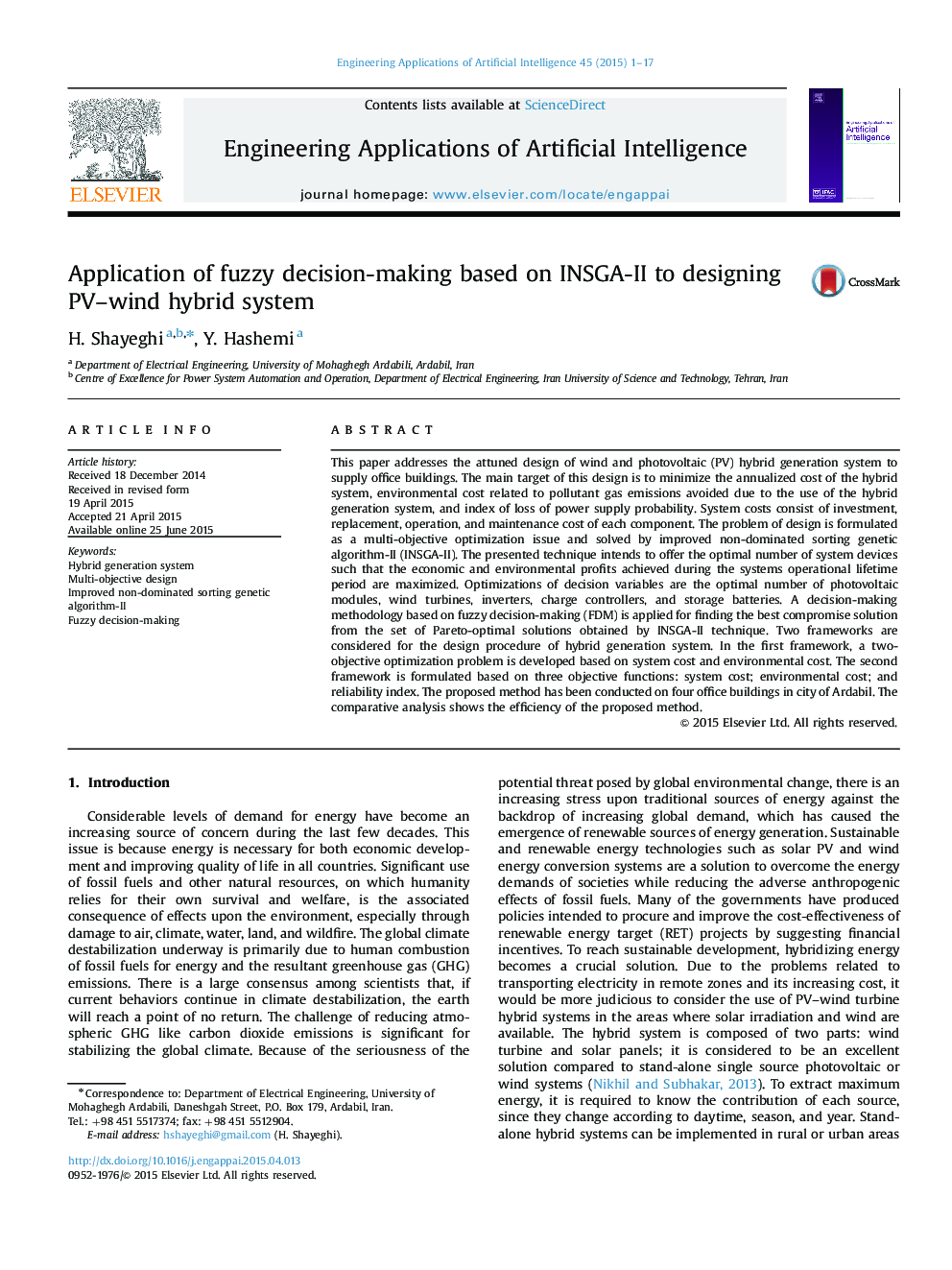| کد مقاله | کد نشریه | سال انتشار | مقاله انگلیسی | نسخه تمام متن |
|---|---|---|---|---|
| 380362 | 1437434 | 2015 | 17 صفحه PDF | دانلود رایگان |

• Multi-objective optimization approach is performed to plan PV/wind hybrid system.
• Solving optimization matter of design by INSGA-II based on FDM method.
• Technical-economic study of renewable system for feeding realistic official buildings.
This paper addresses the attuned design of wind and photovoltaic (PV) hybrid generation system to supply office buildings. The main target of this design is to minimize the annualized cost of the hybrid system, environmental cost related to pollutant gas emissions avoided due to the use of the hybrid generation system, and index of loss of power supply probability. System costs consist of investment, replacement, operation, and maintenance cost of each component. The problem of design is formulated as a multi-objective optimization issue and solved by improved non-dominated sorting genetic algorithm-II (INSGA-II). The presented technique intends to offer the optimal number of system devices such that the economic and environmental profits achieved during the systems operational lifetime period are maximized. Optimizations of decision variables are the optimal number of photovoltaic modules, wind turbines, inverters, charge controllers, and storage batteries. A decision-making methodology based on fuzzy decision-making (FDM) is applied for finding the best compromise solution from the set of Pareto-optimal solutions obtained by INSGA-II technique. Two frameworks are considered for the design procedure of hybrid generation system. In the first framework, a two-objective optimization problem is developed based on system cost and environmental cost. The second framework is formulated based on three objective functions: system cost; environmental cost; and reliability index. The proposed method has been conducted on four office buildings in city of Ardabil. The comparative analysis shows the efficiency of the proposed method.
Journal: Engineering Applications of Artificial Intelligence - Volume 45, October 2015, Pages 1–17